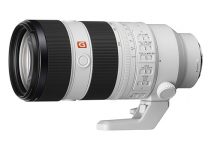Apple’s M1 chip is still turning heads when it comes to its performance. Things keep looking better and better for the Macs as more software is natively supporting the silicon and should lead to even better performance. One of the big names in video editing, Adobe, just released a beta for Premiere Pro that should show off some of these improvements.
Filmmaker Max Yuryev is among those taking a deep look at video editing performance on the M1 Macs and took the time to compare a 13” MacBook Pro to the latest Razer Book 13 with Intel’s 11th-gen processors. Being similar in price and target audience it’s definitely worthwhile checking out.
As for the exact models, the 13” MacBook Pro has:
- Apple M1 Chip
- 8-Core CPU & 8-Core GPU
- 16GB Unified RAM
- 512GB SSD
- $1,699
The Razer Book 13 features:
- 4.7GHz Intel i7 4-Core CPU (11th Gen)
- Intel Iris Xe Graphics
- 16GB DDR4 RAM
- 256GB SSD
- $1,599
These are quite close on paper. The Mac does have a higher price point to go along with double the SSD storage, however, Yuryev points out that if he went with a matching SSD size in the MacBook it would actually come out $100 cheaper than the Razer. That’s a bit surprising.
Both systems use a form of integrated graphics and in Geekbench 5 tests it looks like Apple’s M1 chip takes a slight lead over Intel’s Iris Xe graphics. It is noticeable, but not as substantial as one might think.
For CPU, the story is quite similar with the M1 taking the lead. Yuryev does point out that the Razer is unique in its class by performing the same whether connected to AC power or running off battery. That’s not the case with many other performance-oriented Windows laptops.
The first real-world test uses Yuryev’s standard testing footage in Premiere. Stabilizing a 20 second 4K clip is fairly slow and intensive and should show off some differences if there are any.
It looks like the Mac easily wins and didn’t even have to use its fan. The MacBook completed the task in 3:06 and the Razer took 4:21. Compared to a 2019 Mac Pro that took 4:30 this is all impressive performance for a laptop.
DaVinci also has an M1-optimized version of Resolve out and so Yuryev moved there for the same stabilization test. The Mac jumped off to an early lead and the Razer… crashed. So, there’s not much we can glean from this test, but the Mac took 31 seconds and a comparable Dell XPS 13 took 1:15. Seems like an advantage should remain for the Mac in Resolve.
Playback in Premiere is the next test. The footage is the same 4K footage we were looking at earlier with an added note that there are two LUTs applied plus some film grain. The Mac maxes out its graphics but appears to show smooth footage. The Razer on the other hand has plenty of dropped frames here. Dropping the preview to half-res did solve the playback issue on the Razer, so it is still very usable.
Moving on to an export test using the same footage in Premiere Pro. This actually uses Premiere’s built-in encoder as Yuryev wasn’t sure if Adobe Media Encoder had received a similar beta with M1 support. Still, the M1 appears to be going much faster.
Interestingly, the Razer isn’t actually maxing out the GPU or CPU whereas the Mac is maxing out the GPU. It’s unclear whether this is due to how the OS and app interact to share resources or simply a bug, but right now the M1 is winning by making full use of the components. Final results for the 5-minute 4K export are 9:25 for the MacBook and 15:20 for the Razer.
Now, Premiere may simply not be as well optimized for Windows machines. Which would explain the significant performance differences. If you are a video editor this is likely a big concern and if the M1 support gets better over time than the M-series Macs. Blackmagic seems to be doing a better job with Resolve.
When Yuryev moves to Resolve, the Razer’s GPU usage finally shoots up to max meaning it is maximizing performance for the export. Now that the usage is equivalent between the two computers we should see a more reasonable comparison.
And even still, the M1 Mac exports the file in 4:55 while the Razer is way behind at 9:02. Considering earlier Geekbench tests didn’t show this much of a difference, this might come down to the hardware video encoders and decoders on the chips.
Sticking with Resolve for a moment to do the playback test, again the Mac is smooth while the Razer struggles hard with it, dropping a majority of frames. Yuryev also points out the Razer’s fan kicked to full gear and is noticeably loud.
If you are looking to use Final Cut or see how it compares to the other optimized app Yuryev did do an export test. This showed even more improvement over Resolve and Premiere, which shouldn’t really be a surprise as Apple’s integration with their hardware has always been the best. This setup exported the clip in just 3:04, faster than Resolve at 4:55 and Premiere at 9:25.
All the previous tests were running H.264 footage. With the increased number of cameras shipping with H.265 and increased support for computers and programs Yuryev did take a quick look and surprisingly saw even better performance playing the footage back. The Mac, again, was smooth, and the Razer only had some minor stuttering, which was dramatically better than the previous tests.
In a surprise twist, in Premiere with H.265 footage both machines actually worked faster than with H.264—it might be time to upgrade your PC to make use of this.
For exports, both were faster than before with Premiere delivering the file in 7:28 on the MacBook and 11:01 on the Razer. Resolve showed the same thing with export times of 3:40 on the Mac and 8:40 on the MacBook. And, Final Cut is down to just 2:25.
The M1 chip is a game-changer for computers. With significant performance gains, especially compared to similar Intel-based Windows systems, Apple Silicon might be the reason to upgrade or even switch to Mac.
I’m keeping an eye on these systems, but I am totally ready for a more powerful iMac or even Mac Pro with Apple Silicon inside. Are you considering getting an M1 Mac?
[source: Max Yuryev]
Order Links:
- Adobe Creative Cloud (B&H, Amazon)
- Adobe Premiere Pro CC (B&H, Amazon)
- DaVinci Resolve Studio (B&H, Amazon)
- Apple MacBook Air w/ M1 Chip (B&H, Amazon)
- Apple MacBook Pro w/ M1 Chip (B&H, Amazon)
- Apple Mac mini w/ M1 Chip (B&H, Amazon)
- Razer Book 13 Laptop (B&H, Amazon)
Disclaimer: As an Amazon Associate partner and participant in B&H and Adorama Affiliate programmes, we earn a small comission from each purchase made through the affiliate links listed above at no additional cost to you.



